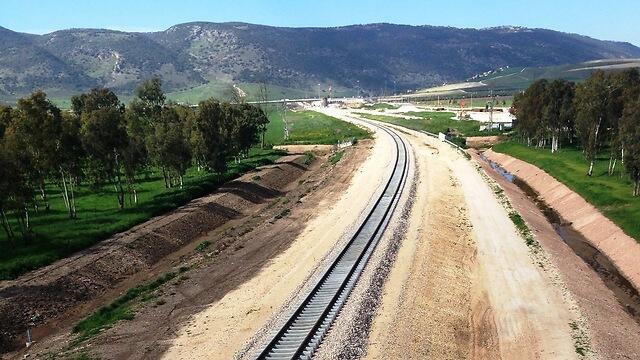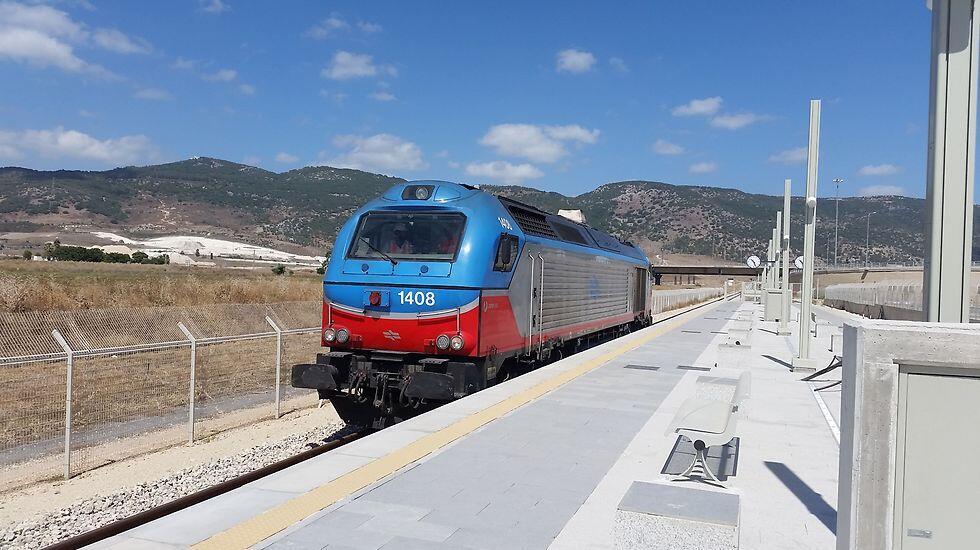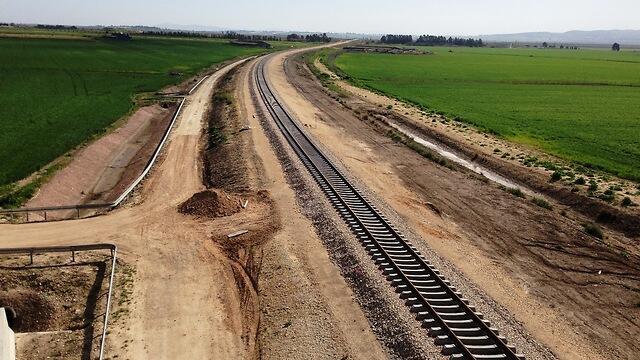Getting your Trinity Audio player ready...
It used to whistle and rumble in the Israeli days of yore. But soon, 65 years after it stopped working, the Jezreel Valley Railway will open up again. Accompanied by three women who remember when the train regularly ran, Yedioth Ahronoth was able to experience the new train's first run in over six decades.
First built by the Ottoman Sultan at the turn of the 20th century, the train went from Haifa and went all the way to Damascus. Its history is interwoven with the history of pre-state Israel.
"The next stop is Kfar Yehoshua. Please make sure you take your belongings from the train," says the announcement after leaving Haifa towards Beit She'an. In the carriage sits Ariela (Rilka) Monet, 90, from Balfouria; Tzipora Karshi, 83, from Kfar Baruch; and Zehava Katz, 82, from Kibbutz Gvat.
They remember back in the old days that when the train would go up a hill, it would slow down to a walking pace, and the girls would jump barefoot on an off the moving train.
"It's a shame our grandkids will never get to experience that," the women said.
"It feels like we did that yesterday," Rilka said longingly. Yet when the train reached its maximum speed of 100 miles per hour, she can only hang on to her memories from days gone by.
It's definitely not the sputtering whistlepot of the past, as nostalgic as that is. This train is galloping while the three women are reminiscing on days past; days when women would take a break from working in the fields or in the cow sheds or in the kitchens, take out their finest dresses which they brought with them from Russia and eastern Europe, and get on the train to go out in Haifa.
Despite the fact that the train only had wooden benches and wasn't air conditioned, they would get on full of joy and excitement.
The new train is travelling along the same historic route – from Haifa to Beit She'an, which is about 37 miles. According to Israel Railways CEO Boaz Tzafrir, the entire trip will take about 50 minutes. This is because there will be three stops along the way: Kfar Yehoshua, Migdal HaEmek, and Afula.
Two additional stops are expected to be added – one in the Haifa suburb of Nesher, and another within Haifa itself.
Travelers on the railroad will be exposed to views of the green Jezreel Valley, Mt. Tabor, and Mt. Gilboa.
The train will officially begin operating on the eve of the Jewish holiday of Sukkot on October 16th. Transportation minister Yisrael Katz has decided that the trips will be free from October 16th to November 4th. At the end of the trial period, the public can anticipate two trains an hour in both directions.
There will also be freight being pulled along the rails, with goods coming into the Port of Haifa getting loaded onto the freight train, and the train travelling to Beit Shean where the goods will be unloaded and shipped to Jordan, and from there on to other Arab countries.
CEO of Netivei Israel National Transport Inc Nisim Peretz explained that work on the track was completed quickly. Over 900 feet of track was laid down every day, 26 bridges were built – including one which is almost three and a half miles long. They also built three underground tunnels for the train to pass through. Farmers were also taken into account, with crossings for farmers to cross from one side of the track to the other. The entire project cost about $1 billion.




